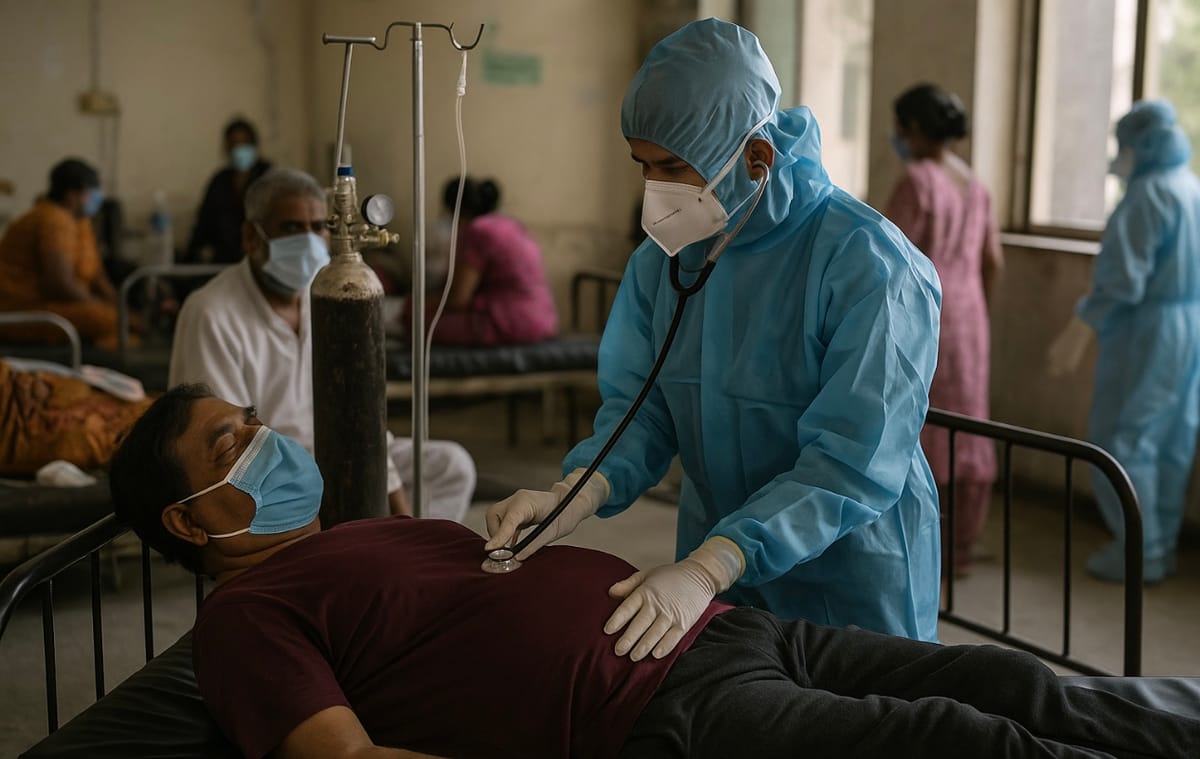COVID-19 Cases Surge in India as NB.1.8.1 Variant Raises New Concerns
The surge in COVID-19 cases due to the NB.1.8.1 variant in India prompts a swift government response and global concern over virus spread.

A new wave of COVID-19 is sweeping through India, this time triggered by the emergence of the NB.1.8.1 variant. Since April 2025, this variant has rapidly spread, causing a spike in new cases across several states, including Kerala, Maharashtra, and Delhi. In response, the Indian government has tightened health protocols and accelerated vaccination programs to curb the spread. This development has sparked concern not just domestically, but also globally, as the variant shows potential to spread to other countries.
Key Characteristics of the NB.1.8.1 Variant
The NB.1.8.1 variant, a subvariant of Omicron, is known for its higher transmissibility. According to data from the Times of India, its transmission rate is 1.5 times higher than previous variants, making it quick to circulate in densely populated communities.
Common symptoms reported include fever, dry cough, sore throat, fatigue, muscle aches, and digestive issues. Some patients have also reported loss of appetite. One of the main concerns with this variant is its ability to evade part of the immune response, both from vaccination and previous infection. Experts emphasize the importance of early detection and a swift response to break the chain of transmission.
Direct Impact on Health and Economy
As of June 6, 2025, active COVID-19 cases in India have exceeded 5,000, with the highest increases in Kerala, followed by Maharashtra and Delhi (Economic Times). Hospitals in several regions have boosted capacity and oxygen supply. The government has also conducted national preparedness drills to anticipate further surges and ensure sufficient medication stockpiles.
This situation has heightened concerns about economic impacts, especially in service, trade, and transportation sectors that had just begun to recover post-pandemic. Many business operators are now taking proactive steps, from tightening workplace health protocols to adjusting operating hours.
Government Response and Expert Recommendations
The Indian government stresses the importance of complete vaccination and booster shots for all community groups. While NB.1.8.1 has a higher immune escape rate, vaccines remain effective at preventing severe symptoms and death. The public is urged to stay alert but not panic and to continue following basic health protocols such as mask-wearing, handwashing, and maintaining physical distance.
The WHO has classified NB.1.8.1 as a Variant Under Monitoring (VUM), meaning it requires intensive surveillance but has not yet been categorized as a globally dangerous variant. Experts believe the current surge mainly affects vulnerable groups like the elderly and those with comorbidities.
Global Spread Potential and Public Precautions
NB.1.8.1 has not only been found in India but has also been reported in the UK, the US, Singapore, and Thailand. This has sparked global concerns, especially ahead of international travel seasons and large religious events. Other countries have tightened airport and seaport screenings and updated their COVID-19 case handling guidelines.
The global public is urged to continue strict health protocols, particularly in public places and mass transportation. Countries with limited healthcare systems are advised to boost testing and contact tracing capacity to prevent further surges.
The Role of Media and Public Education
Mass media and digital platforms play a crucial role in delivering accurate information about the NB.1.8.1 variant. The Indian government is actively sharing updates, releasing case data, and educating the public on the importance of vaccination and healthy living.
The recent COVID-19 surge in India driven by the NB.1.8.1 variant is a reminder that the pandemic is not completely over. Consistent health protocols, accelerated vaccination, and strong public education are key to facing this new wave. With cross-sector collaboration and public support, negative impacts can be minimized.





Comments ()